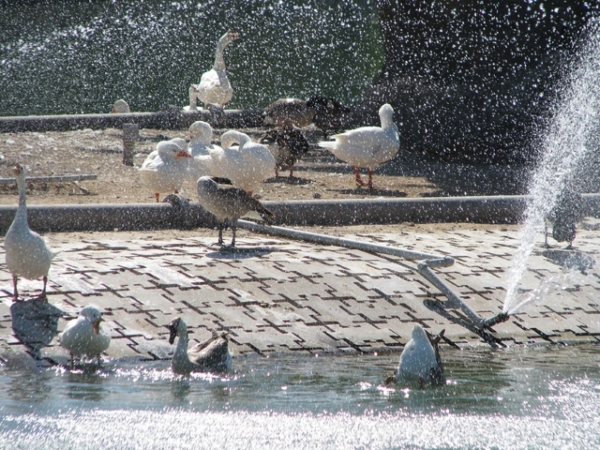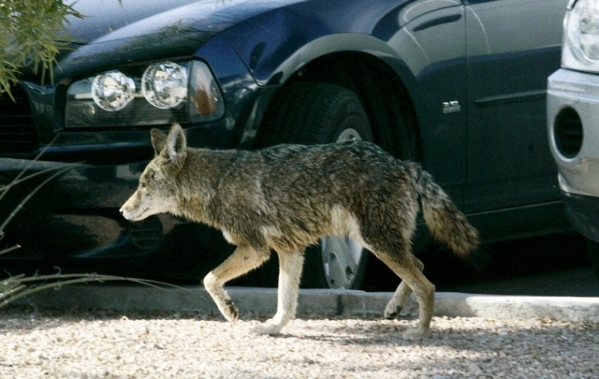Experts say best to avoid engaging, feeding wildlife
It may be hard when encountering an animal in the wild to resist the urge to feed it, but for the animal's sake and several other reasons, it's always best not to give in. Many have been exposed to a lifetime of cartoons and want to see wild creatures up close or as four-legged people in fur suits, but there's many reasons to let wildlife remain wild.
"It's a bad idea for a variety of reasons," said Crystalaura Jackson, a recreation and cultural specialist for Clark County Wetlands Park in the east valley. "Often, the food the animals are given is people food, and it doesn't provide proper nutrition for the animals."
It can also make the animals less self-sufficient. It can become something the animals expect, so they stop hunting or foraging and look to humans for a labor-free meal, which can make for a listless or even obese animal. A fat raccoon might be cute on some level, but weight comes with health issues and a less viable creature all-around. The raccoon that is waddling because it's full of french fries is easier prey for a predator.
"It also encourages animals to approach people and be nearer to roadways, which is unsafe," Jackson said.
Not every animal found dead on the road was on the prowl for a handout or an easy meal, but the great majority were. The situation is compounded by dead animals in the road being an easy meal for carrion eaters, which are, in turn, more likely to be hit by a motor vehicle, creating a vicious cycle of car-crafted carrion. Vehicles swerving to avoid live or dead animals in the road can put humans in danger or result in pricey vehicle repairs.
Senate Bill 371 passed in 2013 making it illegal to feed any big game animal without written authorization from the Nevada Department of Wildlife. Anyone caught doing that may be fined up to $500.
"I know we also added some legislation about feeding birds last year because it was creating a conflict with airplanes," said District E Commissioner Chris Giunchigliani.
Feeding birds — perhaps the most common wild animals fed by the public — can create damage to the ecosystem of bodies of water, including park ponds and natural riparian areas, Jackson said.
"The food debris can create gunk in the water," she said. "In the case of migratory birds, it can discourage them from completing their migratory cycle."
Feeding wild animals can also bring them into conflict with pets or domestic animals. Coyotes, which were in the valley long before people, and small pets are a particular conflict that arises when coyotes become too comfortable with humans. People should never feed wild coyotes.
Feeding coyotes can be intentional, such as tossing an extra burger over the fence, or accidental, such as leaving food meant for pets in the backyard. Coyotes will also find food in the trash or compost, so it's important to cover those with a well-fitting lid.
"First and foremost, the No. 1 thing to do to not attract coyotes is, don't feed them," said Doug Nielsen, a NDOW conservation educator. "At almost every presentation, a person comes up to us afterward and tells us they understand, but they can't bear to see them without feeding them."
Unfortunately, this practice contributes to problems that are already rampant in the valley, according to Jackson.
"Animals should have a natural fear of people. Creating a situation where they aren't afraid isn't safe for the animals or the people," Jackson said.
Visit ndow.org.
— To reach East Valley View reporter F. Andrew Taylor, email ataylor@viewnews.com or call 702-380-4532.


















